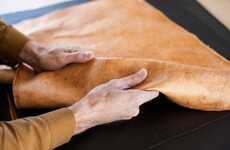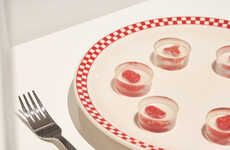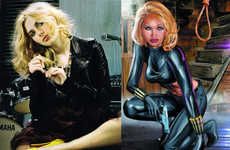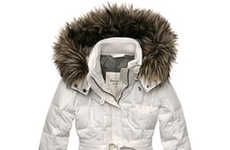
Victimless Leather
Here's a new kind of lab coat; the jacket is actually grown in vitro. The science is no longer just for breeding animals and people; it's now been applied to animal products including leather jackets. This makes it possible to wear goods such as animal skins without ever having to harm a creature.
Victimless Leather is a tissue culture and art project being shown at the Design and Elastic Mind exhibit at the Museum of Modern Art in New York. The exhibit shows how a small-scale version of a leather jacket is grown in a lab. It consists of a living layer of connective and bone cells, nutrient media, a peristaltic pump, glassware and finally, a biodegradable polymer matrix that takes on the form of the jacket.
It was created by Oron Catts and Ionat Zur.
Wild... just wild! A leather even a vegan could wear!
Victimless Leather is a tissue culture and art project being shown at the Design and Elastic Mind exhibit at the Museum of Modern Art in New York. The exhibit shows how a small-scale version of a leather jacket is grown in a lab. It consists of a living layer of connective and bone cells, nutrient media, a peristaltic pump, glassware and finally, a biodegradable polymer matrix that takes on the form of the jacket.
It was created by Oron Catts and Ionat Zur.
Wild... just wild! A leather even a vegan could wear!
Trend Themes
1. Lab-grown Fashion - The trend of using lab-grown techniques to create fashion items, such as leather jackets, without harming animals.
2. Sustainable Materials - The trend of using biodegradable polymers and alternative materials in fashion design to reduce environmental impact.
3. Art and Science Collaborations - The trend of merging art and science to create innovative and thought-provoking projects, like Victimless Leather.
Industry Implications
1. Fashion - The fashion industry can explore the potential of lab-grown techniques and sustainable materials to create cruelty-free and environmentally friendly products.
2. Biotechnology - The biotechnology industry can develop and optimize lab-grown techniques to produce a wide range of animal-free materials, including leather.
3. Art and Design - The art and design industry can collaborate with scientists to create artworks that challenge traditional notions of materials and processes.
3.7
Score
Popularity
Activity
Freshness























